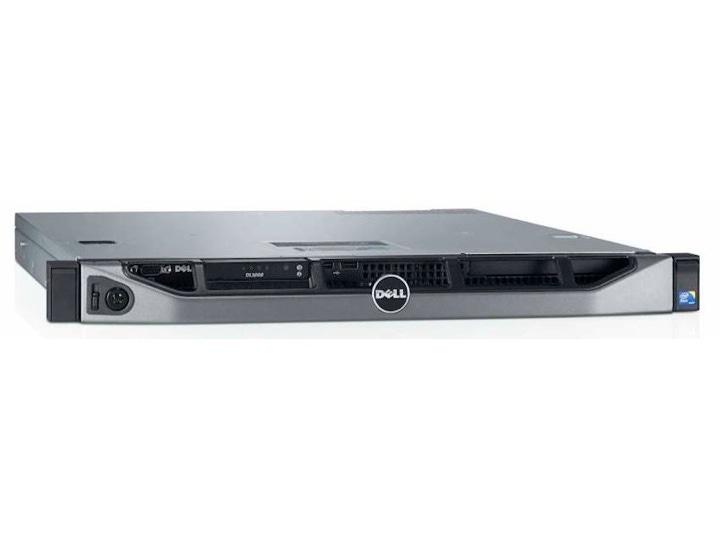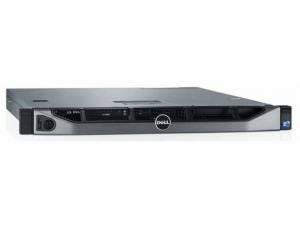MSPs' Next Growth Opportunity: Disaster Recovery as a Service, or DRaaS
Many channel partners have yet to focus on the DRaaS business and risk falling behind the early movers. But the market has not reached full maturity, so it’s a good time to explore the potential of a cloud-based disaster recovery service.
August 8, 2014

By Dell Guest Blog
 DRaaS, or disaster recovery as a service, has emerged as one of the fastest-growing segments for service providers. MarketsandMarkets, a market research and consulting firm based in Dallas, estimates that the global DRaaS market will expand from $640.8 million in 2013 to $5.77 billion in 2018. The company pegs the compound annual growth rate during that period at 55.2 percent.
DRaaS, or disaster recovery as a service, has emerged as one of the fastest-growing segments for service providers. MarketsandMarkets, a market research and consulting firm based in Dallas, estimates that the global DRaaS market will expand from $640.8 million in 2013 to $5.77 billion in 2018. The company pegs the compound annual growth rate during that period at 55.2 percent.
Despite the surging market, many channel partners have yet to focus on the DRaaS business and risk falling behind the early movers. But the market has not reached full maturity, so it’s a good time to explore the potential of a cloud-based disaster recovery service.
A growth-oriented MSP has a couple of ways to go when fielding a DRaaS solution for its small- and medium-sized business (SMB) customers. The traditional method is to deploy DR software on the hardware the customer wishes to protect and on the target systems that the MSP or third-party hosting company maintains. The DR software handles the process of replicating the customer’s data to the safety of an off-site recovery location.
The software deployment method can prove difficult, however. A customer may possess both legacy hardware and newer platforms, which makes installing software a challenging assignment. But the task of marrying software to a mixed hardware environment isn’t the only issue. The MSP may encounter a number of complexities around the setup process and around recovery. Installing the DR system, and optimizing it for the customer’s particular recovery point and recovery time objectives, is time consuming. The time drain is ultimately a cost that impacts the MSP’s profitability.
Appliance-based DRaaS
MSPs, however, can adopt an alternative to the software approach: an appliance-based DRaaS solution. An appliance bundles hardware and software into a pre-configured solution designed to address a specific task–in this case, disaster recovery.
A DRaaS appliance provides several benefits for an MSP’s end customer. The appliance offers easier deployment and a uniform experience for SMBs. The purpose-built DRaaS appliance avoids the installation hassles and inconsistency of software-based solutions, which involve a fair amount of mixing and matching in a heterogeneous setting. MSPs can avoid hardware inconsistencies when they deploy uniform appliances. The legacy-versus-new-platform conflict is no longer a worry.
The appliance approach also lets SMBs move business-critical data offsite to their MSP partners. Remote replication provides better protection, since the customer’s data isn’t housed at its own physical location. The MSP houses the data across town or, potentially, in a different geographic region.
Other appliance advantages depend on the availability of certain feature sets. For example, some vendors integrate file deduplication and compression as part of their appliances. This helps the customer consume less bandwidth during replication and store less data in the DR environment. Both benefits save the customer money. An appliance vendor may also provide a standby feature that sends updates to a virtual machine, which the customer can quickly spin up in the event of a disaster. The virtual standby contributes to the speed of recovery.
Finally, an appliance reduces hardware costs compared with a do-it-yourself software/hardware build. Since the appliance is designed and optimized for DR, the customer won’t be paying for a lot of unused capacity.
MSP Benefits
For the MSP, appliance-based DRaaS reduces the cost of building a DR service. For one, the appliance provides a quick and simple setup procedure. The service provider no longer has to spend an enormous amount of time–and, therefore, money–prepping infrastructure for a DR solution. In addition, the units are available at a lower cost than other hardware/software alternatives. Lower infrastructure costs boost the bottom line.
The uniform experience that benefits customers also helps the MSP: A simplified, consistent environment is much easier to maintain than one that involves multiple, disparate hardware platforms.
A DRaaS appliance also makes for easier recoveries. An appliance designed to take frequent data snapshots provides a wealth of recovery points. Near-continuous data protection means the MSP can minimize data loss in the event of an outage at one of its customers. And offsite replication makes the service provider a key element in an SMB’s data protection strategy.
Deduplication and compression capabilities, if available on the appliance, help the service provider shrink networking and storage requirements. And the ability to run virtual standbys on the appliance lets the MSP offer a faster response time and a higher level of service.
Conclusion
An appliance-based approach to DRaaS makes it easier and less expensive for a customer to deploy a first-rate disaster recovery solution. For the MSP, an appliance greatly simplifies the job of rolling out a DR service and makes the operation more profitable via cost reduction.
With those benefits in mind, Dell recently launched the DL1000 Backup and Recovery Appliance. The appliance consists of a Dell PowerEdge R220 server with Dell’s AppAssure data protection software preinstalled, providing a unified solution for backup, replication and recovery.
Dell offers three models of the DL1000: 2B, 3TB, and 3TB with two virtual machines. Prices range from $4,889 to $8,899. The appliance may be configured to take snapshots as frequently as once every 60 minutes; the DL1000 replicates those snapshots offsite to the MSP. It also features integrated deduplication and compression capabilities, and can house up to three months of data.
For more information, please visit http://software.dell.com/products/appassure-dl1000-backup-and-recovery-appliance/.
 Dell provides a range of solutions for service providers and their customers.
Dell provides a range of solutions for service providers and their customers.
You May Also Like
